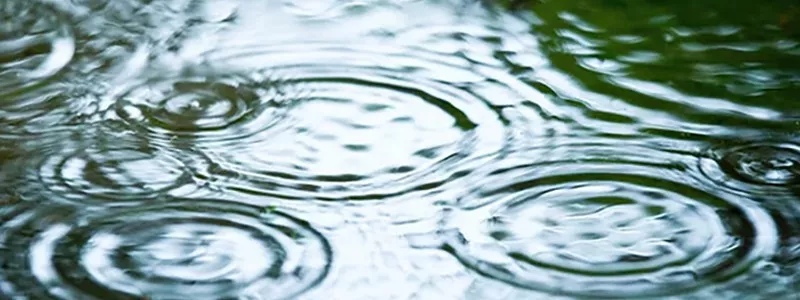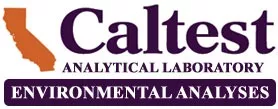
Wastewater Analysis and Stormwater Monitoring Analyses at Caltest Labs
Click here to download Caltest’s Stormwater Information Sheet.
Stormwater Monitoring is required by EPA and State regulators. Under regulation, rainwater is sometimes referred to as run-off, e.g., urban runoff, industrial run-off, or agricultural run-off. Rain itself may contain trace pollutants, but the focus of stormwater monitoring is on the pollutants scoured, rinsed or otherwise mobilized by rain.
Much of the surface water pollution related to discharges from sewage treatment plants and industrial point sources, comes from rain run-off. Rainwater mobilizes pollutants that it comes in contact with. This type of pollution transport can occur everywhere that rain falls on sources of pollution. This contribution of pollutants to waterways is called a ‘Non-Point Source’.
A point source of pollution is associated with an ‘end of pipe’. Think of a wastewater treatment plant that takes in water from sanitary sewers, cleans it up and discharges it to the environment – that is a point source, a known fixed point. Stormwater enters waterways from multiple directions and points too numerous to consider in the straight-forward way we think of an end of pipe source. Stormwater comes in contact with, and then transports: sediments, pesticides, trace levels of metals, bacteria, oils, trash etc. Stormwater pollution varies with the source of pollutants present, this can include urban, agricultural, timber harvesting and mining sources,to name a few.
Stormwater, and non-point sources of pollution, is the largest cause of impairment to waterways of the U.S. and is now under regulation. Some of the monitoring (depending on the area of land involved, and the use of the land) is regulated under general permits (general construction permit, general industrial permit, general municipal permit), and some permits specific to a large municipal area.
The U.S. Environmental Protection Agency (EPA) administers the Clean Water Act. Within the Clean Water Act is a system of regulating discharges of pollution to waterways called the National Pollutant Discharge Elimination System. The common acronym for this permit system, and the permit itself for the permit holder, is NPDES. The NPDES permit is the regulatory tool used by the EPA, and or the State (when the state applies EPA programs) to require management of a water discharge to reduce pollution to public waterways. In the case of stormwater, much of the management is utilization of best management practices (BMPs) to minimize contact of rain to pollutants and thus preventing the rain from transporting pollutants to public waterways.
In this sense much of stormwater management does not involve direct monitoring with analytical chemistry and microbiological methods, but rather oversight of best management practices. Stormwater permits may include covering soil piles to avoid mud flows and using straw to slow down and filter highly turbid muddy water going down a storm drain. It would also include things like street sweeping to try to physically remove urban pollutants from streets prior to rain rinsing them into the storm drains. Much of stormwater regulations are actually pollution prevention programs, attempting to prevent the mobilization of pollutants into waterways. Some of the stormwater regulations include treatment of sorts, such as detention basins where pollutants can settle out before entering streams, or vegetated swales where pollutants are trapped by the soil and plants etc. Whatever the practices employed to improve the quality of stormwater with respect to pollutants, at some point the water itself may be tested to document its quality. That is where Caltest Analytical Laboratory, and labs like it come into play.
Caltest provides analyses of stormwaters for compliance monitoring. Stormwater analysis are related to the Clean Water Act, which requires analytical methods listed in the Federal Register (40 CFR part 136). Caltest is certified for the use of these required methods. Some of the pollutants of concern for stormwater include sediments, metals (like mercury, copper, lead and zinc), pesticides (like diazinon, chlorpyrifos, and pyrethroids), petroleum hydrocarbons (fuels and oils), nutrients (like phosphorus and nitrogen), solids (such as total suspended solids) bacteria, and oxygen demand.
Caltest provides appropriate containers for stormwater samples along with chain of custody forms, and a reference chart related to EPA-recommended container preservation and holding times (how soon the sample must be analyzed after sample collection).
What gets measured? The permits themselves will dictate the minimum monitoring parameters and may call for additional analysis depending on the potential pollutants on the property. Typical tests include:
- Total Suspended Solids (TSS)
- pH (field measurement)
- Oil and Grease
- Total Organic Carbon (TOC)
- Electrical Conductance (EC/SC)
- Surfactants
- Metals such as mercury, copper, lead, and zinc
- Coliform bacteria (Total, Fecal, E.Coli, etc.)
- Pyrethroids and other pesticides such as Diazinon and Chlorpyrifos
- Nutrients such as phosphorus and nitrogen
Some additional testing related to specific problems in a watershed might include:
- Dioxins
- PCBs (polychlorinated biphenyls)
- PBDEs (polybrominated diphenyl ethers)
- Mercury (total and methyl mercury)
- Selenium
- Biochemical Oxygen Demand (BOD)
- Chemical Oxygen Demand (COD)
- Total Dissolved Solids (TDS)
Caltest is open Monday-Friday 8am – 5pm to receive samples. If shipping samples, please ship them on ice, overnight with an early morning delivery and note : “ATTN: Sample Receiving” on any coolers shipped. We also have couriers available to pickup samples, you can request a pickup online or call the lab to check for availability. A courier fee may apply. We recommend that you coordinate with the lab in advance to ensure meeting holding time requirements.
To discuss your permit monitoring compliance needs, contact your Caltest project manager or email the client services team at info@caltestlabs.com.
